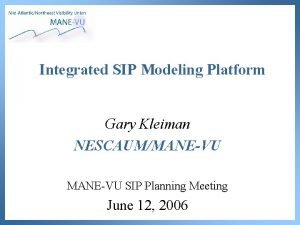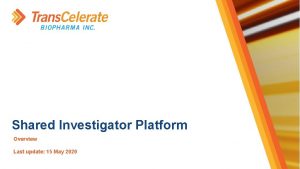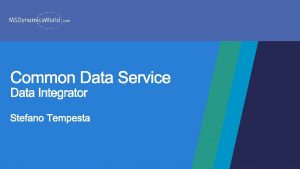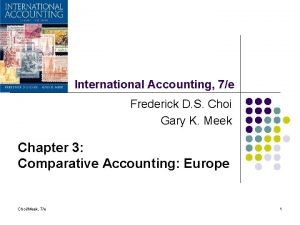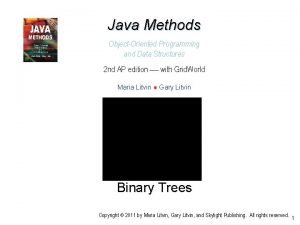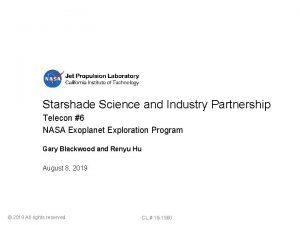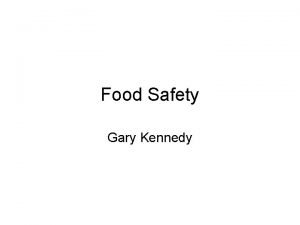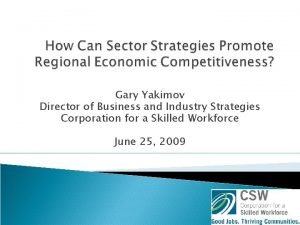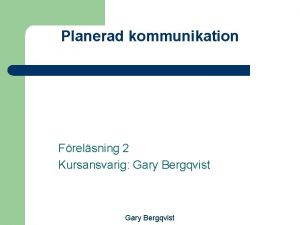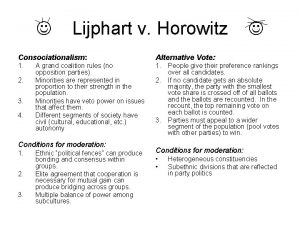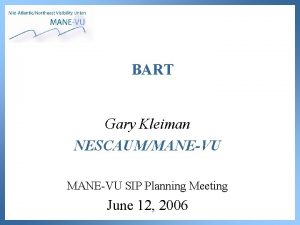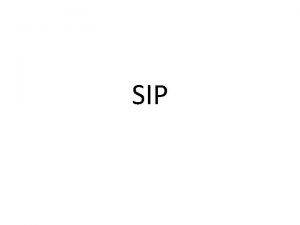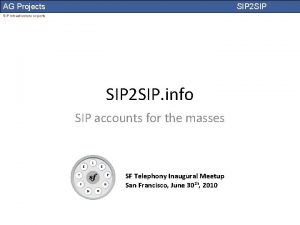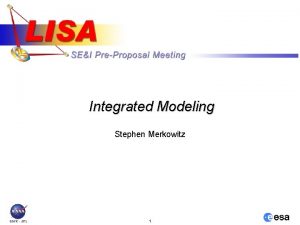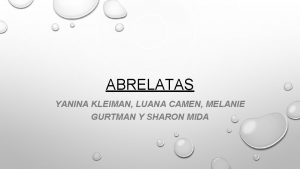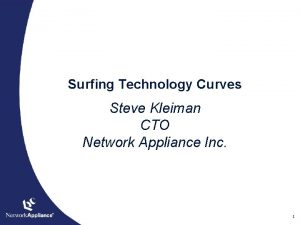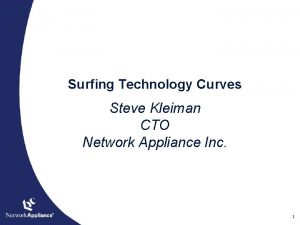Integrated SIP Modeling Platform Gary Kleiman NESCAUMMANEVU SIP

















- Slides: 17

Integrated SIP Modeling Platform Gary Kleiman NESCAUM/MANE-VU SIP Planning Meeting June 12, 2006

MANE –VU Modeling and Analytical Tools • Integrated SIP Modeling Platform (CMAQ) • CALGRID Screening Model • Sulfate Tagging/Apportionment Tools (REMSAD tagging, CALPUFF w/MM 5, CALPUFF w/obs, Q/d, %time upwind) • Single Source Modeling for BART (CALPUFF x 2, Q/d, limited REMSAD)

MANE-VU SIP Modeling • MANE-VU SIP Modeling is being conducted jointly by NYDEC, NJDEP and Rutgers, UMD, VADEQ, and NESCAUM utilizing a CMAQ platform driven by MM 5 generated meteorological fields and SMOKE processed emission inputs • MANE-VU CMAQ Modeling Domain includes a 36 km (Continental US) resolution domain and a 12 km (Eastern US) resolution domain • MANE-VU Base 2002 Base Case Scenarios - 2 sets of emissions so far: Base A (2002 annual) & Base A 1 (May 15 ~ September 30, 2002) • Model evaluation utilized observed data from two networks : STN and IMPROVE • CMAQ performance on PM 2. 5 species is evaluated via : - Comparison of daily average PM 2. 5 species mass between observation and model prediction for all network sites within domain throughout specific period (annual and summer) - Illustration of temporal variation on mean bias of monthly average PM 2. 5 species mass - Demonstration of spatial pattern of correlation coefficient between observation and model prediction within domain through specific period (annual and summer) - Comparison of MFE and MFB for MANE-VU sites with goals ( ( ) suggested by Boylan (2004) - General comparison with other RPOs’ model performance (Ku et al. , 2005) ) and criteria

Evaluation of PM 2. 5 Sulfate Daily Average Observation and Model Prediction Monthly Average and Bias Other RPOs’ Modeling Performance on Sulfate for July 2002 at IMPROVE Sites (Ku et al. , 2005 Denver)

* Correlation (R) between daily average observation and model prediction is calculated for each network site for the specific period available: 2002 annual or May 15 ~ September 30

Network Sites within MANE-VU Statistical measures for Sulfate Mean Fractional Error & Mean Fractional Bias of SO 4 within MANE-VU for 2002 * Goals and Criteria of MFE and MFB follow Boylan (2004)

Other Species

Comparison of Extinction Coefficient for Base. A

Integrated SIP Modeling Schedule Model Runs for Ozone, PM and Haze Emission Files Status CMAQ Run ID M-V Vistas MW RPO SMOKE Date CMAQ vers MCIP vers Date Done 2002 Base Case A 1 Base D VISTAS Base D NYDEC Aug-05 4. 4 2. 3 Sep-05 Done 2002 Base Case A 1 1(corrected) Base D VISTAS Base D NYDEC Dec-05 4. 4 2. 3 Jan-06 Done 2009 Base Case A 1 2 Base D VISTAS Base D NYDEC Jan-06 4. 4 2. 3 Feb-06 CMAQ Modeling Model Runs for Ozone, PM and Haze Emission Files CMAQ Modeling Status CMAQ Run ID M-V Vistas MW RPO SMOKE Date CMAQ vers MCIP vers Date Do Next 2018 Base Case A 1 2 Base F J NESCAUM 27 -Mar 4. 4 2. 3 15 -Apr Do Next 2002 Base Case B 3 Base F Base K NYDEC 30 -Jun 4. 5 3 31 -July Do Next 2009 Control Case B 3 Base or Control G Base or Control K NYDEC 15 -Aug 4. 5 3 15 -Sep Do Next 2018 Control Case B 3 Base or Control G Base or Control K NESCAUM 15 -Aug 4. 5 3 15 -Sep

What does our preliminary modeling tell us about our implied 2009 and 2018 uniform progress goals?

Sulfate Relative Reductions 2009 Relative Mass Reduction 2018 Relative Mass Reduction

Projected Mass Reductions Annual Average Sulfate Values

Relative mass reductions applied to visibility metric for New England sites Note: deciviews are not directly proportional to mass

Relative mass reductions applied to visibility metric for Mid-Atlantic sites Note: deciviews are not directly proportional to mass

Baseline visibility and estimated natural conditions determine uniform rate Old IMPROVE Algorithm New IMPROVE Algorithm

Need Natural Conditions to Estimate Effect Alternative Baseline Conditions Default uniform progress path Alternative paths? Default Baseline Conditions Uniform Rate is Very Sensitive to Natural Conditions Estimates Default Natural Conditions

 Gary kleiman
Gary kleiman Role modeling theory
Role modeling theory Dimensional modeling vs relational modeling
Dimensional modeling vs relational modeling Shared investigator platform
Shared investigator platform Integrated mobility platform
Integrated mobility platform Single integrated platform
Single integrated platform Governance risk compliance framework
Governance risk compliance framework Gary contin
Gary contin Anel de schatzki-gary
Anel de schatzki-gary Root node
Root node Gary blackwood jpl
Gary blackwood jpl Gary kennedy food
Gary kennedy food Gary copson
Gary copson Mother
Mother Gary yakimov
Gary yakimov Målgruppsanalys kommunikation
Målgruppsanalys kommunikation Gary cottrell
Gary cottrell Dr gary horowitz
Dr gary horowitz
